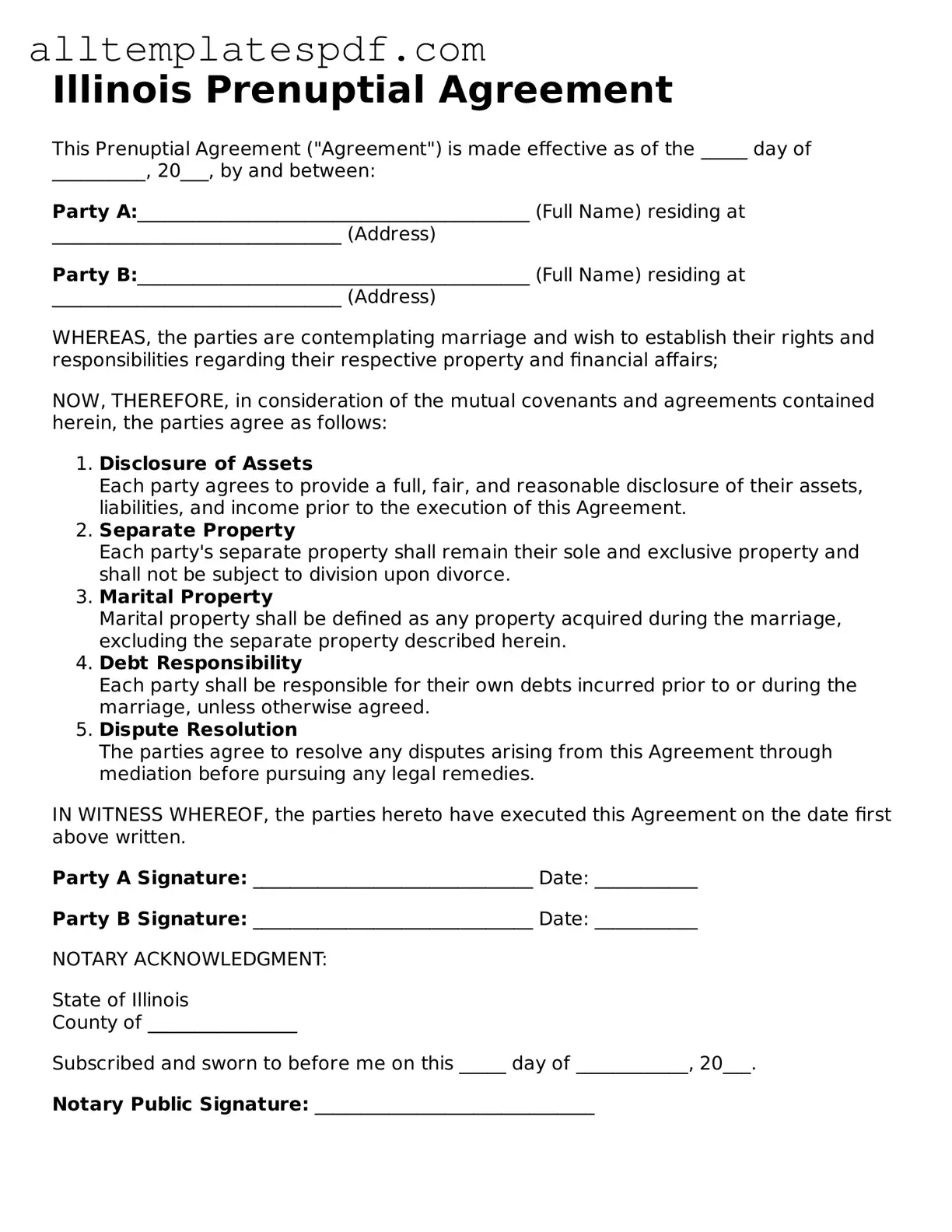Blank Prenuptial Agreement Template for the State of Illinois
A Prenuptial Agreement is a legal document that couples create before marriage to outline the division of assets and responsibilities in the event of a divorce or separation. This agreement can provide clarity and peace of mind, ensuring that both parties understand their rights and obligations. If you're considering this important step, take action by filling out the form below.
Open Editor
